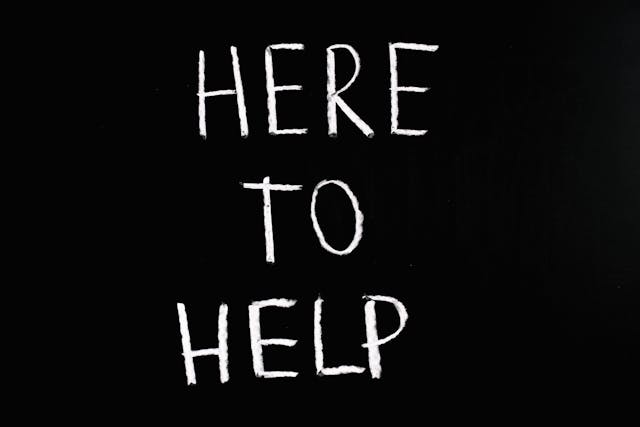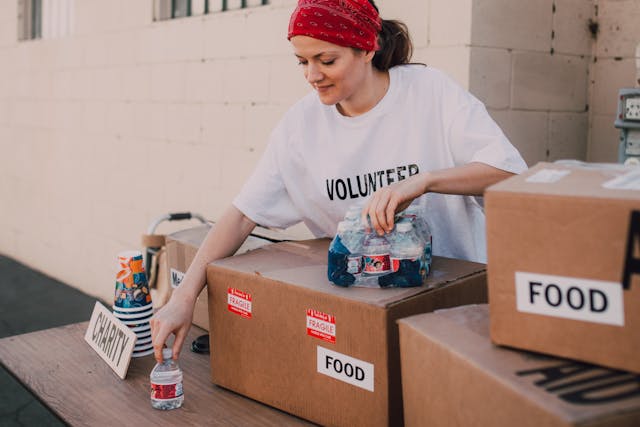New York State provides a wide range of resources to support families in need, including access to food assistance and services for survivors of domestic violence. Programs such as SNAP (Supplemental Nutrition Assistance Program), food pantries, and community meal programs help ensure families do not go hungry. In addition, the state offers comprehensive domestic violence support services, including emergency housing, counseling, legal advocacy, and case management. These services are available through a network of community organizations dedicated to helping families achieve safety, stability, and long-term well-being. The state works in partnership with community-based organizations to ensure survivors receive culturally responsive and trauma-informed care tailored to their individual needs.
Here are some of the resources available in NYS:
Domestic Violence Resources
National Domestic Violence Hotline: 800-799-7233
Advocates are available 24/7 at 1-800-799-SAFE (7233) in more than 200 languages. All calls are free and confidential. Click here for their website.
New York State Domestic Violence Hotline: 800-942-6906
Click here for their website.
My Sister’s Place: 800-298-7233 (SAFE)
Click here for their website.
Hope’s Door: 800-942-6906
Click here for their website.
Pace Women’s Justice: 914-422-4069
Click here for their website.
NYC Mayor’s Office to End Domestic and Gender-Based Violence Hotline: 800-621-HOPE
Click here for their website.
National Human Trafficking Hotline: 800-373-7888
Human trafficking is a form of modern-day slavery and occurs when a trafficker coerces another person to perform commercial sex acts or labor or services against his/her will. Force, fraud, or coercion need not be present if the individual engaging in commercial sex is under 18 years of age. Text 233733. Click here for their website.
Safe Horizon
A leading victim assistance organization with local offices in NYC.
Click here for their website.
Click here for their one-on-one online chat system available Monday – Friday 9 am – 6 pm
NYC Hope
Connects people to resources to help them or a loved one experiencing dating, domestic, or gender-based violence. Click here for their website.
Legal Aid Society: 212-577-3300
The Legal Aid Society can help with arrests, bail, family court, domestic violence, employment, health, housing, and many other issues. Click here for their website.

Food Resources
New York State has various food resources available to help individuals and families in need. These include food pantries, soup kitchens, and programs like SNAP (Supplemental Nutrition Assistance Program) and WIC (Women, Infants and Children).
Hunger Solutions New York
Click here for their website.
City Harvest
Click here for their website.
NYS Department of Health
Click here for their website.
Feeding NYS
Click here for their website.
NYS Public Benefits Webiste
Click here for their website.
NYC Public Benefits Webiste
Click here for their website.
Benefits
Electronic Benefits Transfer (EBT)
Information on your EBT card.
What can I purchase with SNAP?

| Maximum SNAP Benefit Allowances | |
| Household Size | Maximum Allotment* |
| 1 | $292 |
| 2 | $536 |
| 3 | $768 |
| 4 | $975 |
| 5 | $1,158 |
| 6 | $1,390 |
| 7 | $1,536 |
| 8 | $1,756 |
| For each additional member | $220 + |
* These figures are based upon SNAP Standards effective October 1, 2024.
Note: A SNAP budget must be calculated for your household in order to determine SNAP eligibility and benefit amount.
Eligibility
If your income (based on your family size) is less than or equal to the amounts in the charts below, you may be eligible for SNAP benefits.
- If your household’s gross income is below these amounts, it does not ensure that you will be eligible for a benefit.
- A SNAP budget must be calculated for your household in order to determine eligibility and benefit amount.
- The only way to determine if your household is eligible for SNAP benefits is to apply.
Gross income means a household’s total, non-excluded income, before any deductions have been made such as taxes or other withholdings. Net income means gross income minus allowable deductions.
Click Here Get Help Applying for SNAP https://otda.ny.gov/programs/snap/online.asp
| Income Guidelines for Households without Earned Income (no member 60 years or older nor disabled member) | ||
| Family Size | Monthly Gross Income* | Annual Gross Income* |
| 1 | $1,632 | $19,584 |
| 2 | $2,215 | $26,580 |
| 3 | $2,798 | $33,576 |
| 4 | $3,380 | $40,560 |
| 5 | $3,963 | $47,556 |
| 6 | $4,546 | $54,552 |
| 7 | $5,129 | $61,548 |
| 8 | $5,712 | $68,544 |
| Each additional person | $583 + | $6,996 + |
* Chart information is based upon SNAP Standards effective October 1, 2024.
| Income Guidelines for Households with Earned Income (no member 60 years or older nor disabled member) | ||
| Family Size | Monthly Gross Income* | Annual Gross Income* |
| 1 | $1,883 | $22,596 |
| 2 | $2,555 | $30,660 |
| 3 | $3,228 | $38,736 |
| 4 | $3,900 | $46,800 |
| 5 | $4,573 | $54,876 |
| 6 | $5,245 | $62,940 |
| 7 | $5,918 | $71,016 |
| 8 | $6,590 | $79,080 |
| Each additional person | $673 + | $8,076 + |
* Chart information is based upon SNAP Standards effective October 1, 2024.
| Income Guidelines for Households with an Older Adult (60 years or older) or Disabled Member and Households with Dependent Care Expenses | ||
| Family Size | Monthly Gross Income* | Annual Gross Income* |
| 1 | $2,510 | $30,120 |
| 2 | $3,407 | $40,884 |
| 3 | $4,303 | $51,636 |
| 4 | $5,200 | $62,400 |
| 5 | $6,097 | $73,164 |
| 6 | $6,993 | $83,916 |
| 7 | $7,890 | $94,680 |
| 8 | $8,787 | $105,444 |
| Each additional person | $897 + | $10,764 + |
* Chart information is based upon SNAP Standards effective October 1, 2024.
There are other factors that are considered when determining eligibility for SNAP benefits. The only way to know if your household is eligible is to apply.
What if I have savings?
Most households applying for SNAP no longer have to pass a savings/resource test in order to get SNAP benefits. This means that the household’s assets (stocks, savings and retirement accounts, etc.) are not considered when determining eligibility.
What if I am a college student?
To participate in SNAP, a student, in college at least half time, must meet the income eligibility for SNAP and one of the following criteria:
- Be employed for an average of 20 hours per week and be paid for such employment or, if self-employed, be employed for an average of 20 hours per week and receive weekly earnings at least equal to the Federal minimum wage multiplied by 20 hours.
- Participate in a State or Federally financed work study program during the regular school year.
- Provide more than half the physical care for one or more dependent household members under the age of six or provide more than half the physical care of dependent household member who has reached the age of six but is under the age of 12 where adequate child care is not available.
- Enrolled full-time in an institution of higher education and is a single parent with responsibility for the care of a dependent child under age 12.
- Receive benefits from Family Assistance (FA) or federally-funded Safety Net Assistance (SNA).
- Receive Unemployment Benefits (UIB).
- Attend a SUNY or CUNY comprehensive college, technology college, or community college and are enrolled in a qualified career and technical education program.
- Attend any of the 10 Educational Opportunity Centers (EOC) in New York State and are enrolled in a career and technical education program, remedial course, basic adult education, literacy, or English as a second language.
Check out our blog for more information!
Click here for resume writing services!
Please use the contact page (click here) to share your questions and thoughts.


